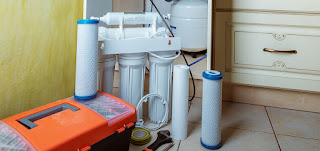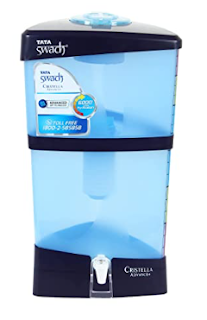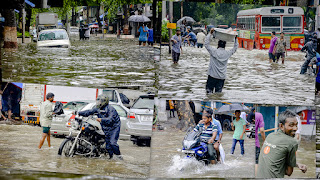Why RO Water Filter Systems are Banned in India? Find the Best Alternative to Home based RO Water Filters
Yes! You read it correctly!! RO water purifiers are banned in 2019 in
Certain areas of India by the National Green Tribunal of India which is basically
a set of executives following the Act of Parliament, India. As Per the
guidelines, it was suggested to dispose of the non-environment friendly
products as soon as the release guidelines.
The parliament body ordered that the RO drinking water purifiers should
not be used anymore in areas with low Total Dissolved Solids (TDS) of less than
500 parts per million (ppm). In continuation this, in the year 2021, the Supreme
court dismissed the appeal of manufacturers directing the Central Pollution
Control Board to issue directions and make regulations under section 5 of the
Environment Protection Act, 1986 for all RO water purifier manufacturers and
sellers banning the RO Water purifiers’ use focusing on TDS level.
Furthermore, the Ministry of Environment and Forest issued a notification
regarding the prohibition of RO use, and inventions were promoted to recover
water up to 60-75% of RO rejected water for the purposes of sustainable uses.
TDS, Total dissolved Solids, it is consisting of inorganic salts, dissolved
solids in terms of metal and ions, and also some amounts of organic matter. As
per WHO, the TDS level needs to be within 300 mg/lit to declare the water as the
best-fit drinking water, the level beyond 900 mg/ lit will be considered a poor
supply of water.
As per the CPCB and MoEF guidelines, most water purifiers are available
with a TDS meter to set the level of TDS for your drinking and domestic uses.
You can go for a Lab or DIY TDS water quality check if you want to assure
your family that they are safe with an acceptable range of TDS in drinking
water.
Where did the main problem start?
When the globe is focusing on the conservation of water, recycling of water,
desalination of water, and many more, RO purifiers waste around 70-80% of water
during the purification process. With the increased population growth, lack of
awareness and disbelieving in environmental regulation led to wastage of huge
volume of water loss from these systems.
Besides the above issue, if we consider health, the de-mineralization of
water is affecting the health if the drinking and domestic water supply has a TDS
level of less than 500 mg/Lit.
These systems waste water and de-mineralize your drinking water. In
addition, these RO water purifiers come without a TDS controller, unlike other
improved water purifiers, which prevent you to regulate the TDS level causing make
you to drink demineralized water, whereas your body requires essential salts
and minerals present in drinking water within the desired limit.
The RO systems involuntarily decrease the TDS level of water by 10 times causing
the water to lack essential nutrients with increased acidity, bad taste, or tastelessness,
which leads to health issues in long run.
Don’t ignore the heath risks from drinking demineralized water.
https://achawater.com/who-report-health-risks-drinking-ro-water.pdf
Yes, if your house is supplied with seawater or borewell water or
groundwater, in this water the TDS level is high due to mixing of infiltration
or seepage of chemicals or discharged water from nearby industries or the possibility
of mixing or infiltration of pesticides washed off.
The Reverse Osmosis water purification technology has taken the
purification systems market progressively in these recent years as compared to
the traditional ozone and activated carbon adsorption methods.
The instant water purification method uses a semi-permeable spiral reverse
osmosis membrane to separate solute and solvent. The pressure-driven mechanism
is adopted to make the water molecules flow. The method can remove salts even
in an ionic state, suspended solids, colloidal matter, nitrate, organic matter,
microorganisms, and heavy metals. The method is considered an effective method by
many researchers and scientists to remove organic pollutants and ensure the
safety of drinking water.
The minute pores allow the water to pass through the membrane and are
delivered as purified water. The methods make the impurities in the water in
the form of salts and reject the stream as REJECT WATER. This rejects water
containing dissolved solids and salts and reduces the TDS level of water making
the RO system unfit for use.
For a general man, the RO system is not required if water is being
supplied from the municipality department or from a city water supply source,
as these sources of water go for specific required treatment making the supply
water fit for drinking and domestic supply.
Reverse osmosis is the best process if you are taking water from an
underground source, with a borewell or open well. The membrane-based techniques
are considered the best techniques for seawater desalination and wastewater
reuse processing in desalination and wastewater recycling plants.
What are the best
alternatives for RO in the market?
Gravity filters with or without Candles
The easy-to-clean-steel-portable
gravity filters are available in the market at a reasonable price. The filter
can clean the natural water resources by screening the harmful compounds, bacteria,
viruses, herbicides, and pesticides.
The cons you can note as: the
filter is slower in comparison to other electric pressure filters with a limited
water-bearing capacity. Due to the limited water filtering capacity, regular
and continuous filtration is tough at home.
But the alternative RO purifier
is good if you go for a short duration of travel with kids or for camping.
Water distillers
My favorite
part of the water distiller is that you don’t have to replace parts on regular
basis. The water distiller can work with a maximum capacity in a long run. But
the filter gives you hot water after distillation, so forget about instant
drinking water. Another major concern is that it can’t distill volcanic organic
material and residual chlorine causing a certain type of serious health concern
in the later part of life.
The water
distillers are best filters for the winter months.
Ultra-filtration system
If we go for non-RO purifiers, the
ultra-filtration systems involve mechanical filters, absorption filters, Sequestration
filters, and Ion-Exchange filters.
Mechanical filters involve
complex pore structures for ultra-fine filtration of pathogenic organics and
salts.
The absorption filters are
carried out by carbon, which can filter microorganisms and contaminants and the
granular activated carbon reduces the unfavorable taste and smell.
The sequestration isolates calcium
and magnesium by reducing the hardness of the water. The use of food-grade
polyphosphate in sequestration prevents scale formation and keeps the minerals
in the water. The presence of minerals causes the water hard and has long-run
health effects.
The Ion-exchange filtration
method literally exchanges the ions from calcium and magnesium to sodium and
hydrogen ions which soften the water. The method is best applicable for those
using kettles for tea or coffee making.
The Cons can be replacement or
recharge of resins, which are being used for ion exchange but the recharge
cannot be done at home. The major concern in using the method is the sodium
ions replaced by Resin can not be drinkable due to their high level, whereas
you can go for hydrogen ion-based resin instead of sodium ions resins.
Countertop water filter
The affordable and perfect
filter for a small family of four to five. It the easy to install with fewer accessories
and low maintenance countertop filter. The maintenance needs the replacement of
cylinders or filters, which is the most important thing here.
The disadvantage you can say is its
volume, but it is the best fit if you stay in a hostel or in a hotel room, when
you don’t bother much about the design of your kitchen or room.
Pitcher filter
The charcoal
filtration net with manual water addition is a common type of filter available
in the kitchen, but the impurities in the water can be retained if you buy a
cheap quality pitcher filter or are not maintaining the same properly.
Some scientists
claim if you don’t take care of a filter, it will add more impurities to your
water rather than remove the same, whereas good brands pitcher filters can also
filter the contaminants up to 50-70%.
Must think before
buying any filter and go for recommendations and review

















